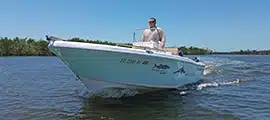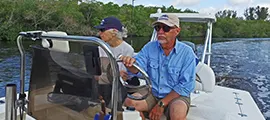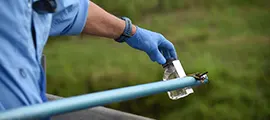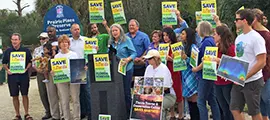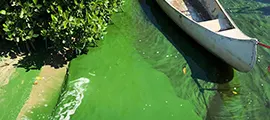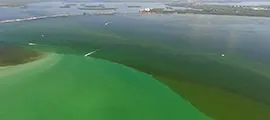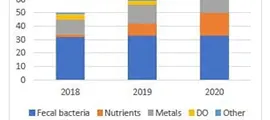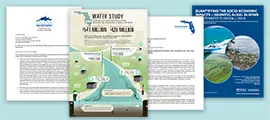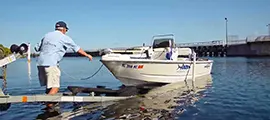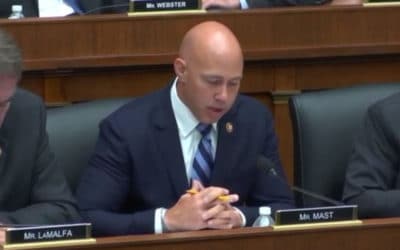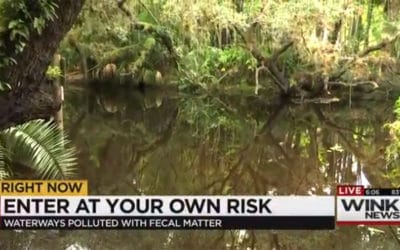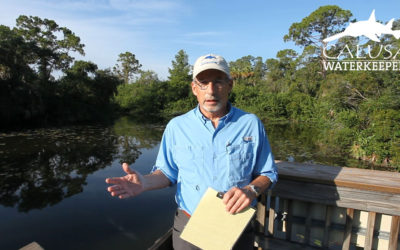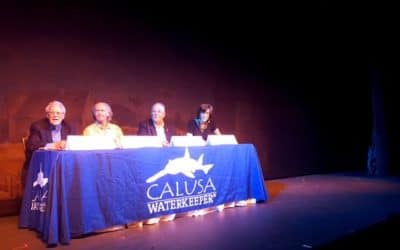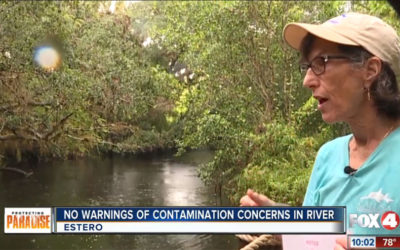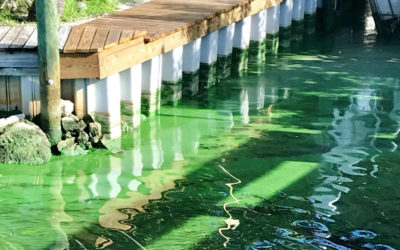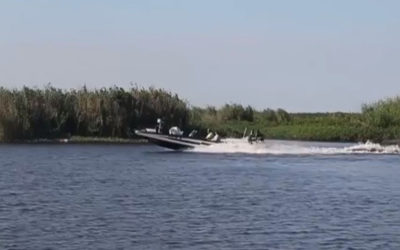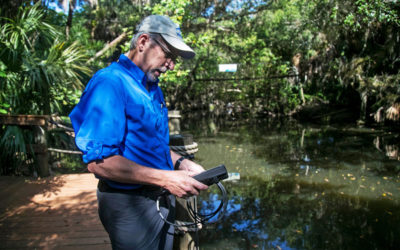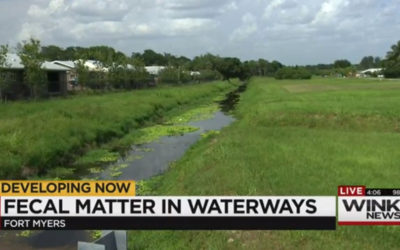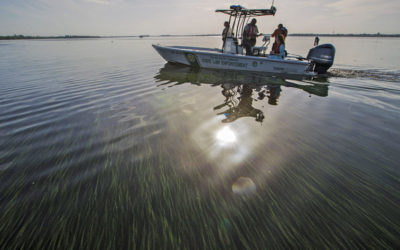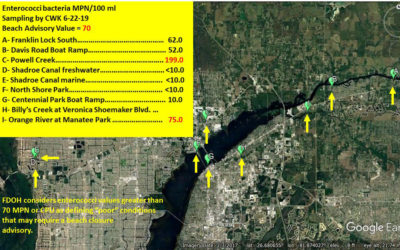Calusa Waterkeeper
In the News
Concerns Moore Haven Lock Released Water Despite Army Corps Reports
John Cassani flew in a small airplane over Moore Haven on Saturday and noticed the Moore Haven lock was open. “The lock was wide open. Which means the water can leave the lake and come into the river directly through the lock chamber,” Cassani said.
Army Corps Acknowledges Toxic Algae and Nutrients in Lake O Releases
The U.S. ACOE acknowledged it has released water from Lake Okeechobee into the Caloosahatchee and St. Lucie rivers that has contained toxic cyanobacteria. In a hearing about the releases from Lake Okeechobee, U.S. Rep. Brian Mast questioned Maj. Gen. Scott Spellmon of the Corps.
No Warning Signs at Many SWFL Waterways Containing Fecal Matter
Enter at your own risk – that is one woman’s message as she fears a stretch of the Estero River is polluted with waste and sewage that can make people sick. FDEP calls the waterway, “verified impaired.” It means the water is polluted with bacteria above what the state claims are safe.
Words from the Waterkeeper, Episode 3
Calusa Waterkeeper John Cassani has the most recent readings from Lake Okeechobee’s harmful algal bloom and microcystin levels. He also shares updates on bacterial hotspots happening in some popular Southwest Florida recreational waterways.
Florida Water Summit Kicks off Campaign
For Southwest Florida, summer months can mean heat, afternoon rain and, as Southwest Florida saw all too well last year, harmful algal blooms. Calusa Waterkeeper’s Florida Water Summit kicked off a campaign to better study the impact of HABs on public health.
High Levels of Bacteria Found in Estero River
Holley Rauen, a retired nurse, Calusa Waterkeeper Ranger and volunteer at the Happehatchee Center in Estero started posting signs around the Estero River and warning kayakers after she learned the FDEP’s tests showed fecal bacteria levels of over 800 in the polluted river.
Florida may Adopt Limits on Amount of Toxins from Blue-Green Algae Blooms Allowed in Waterways
Amid fears of another summer of toxic algae afflicting the state and hurting its economy, officials from the Florida Department of Environmental Protection say they are considering new regulations on how much of the natural toxins are allowed in the state’s waterways.
Army Corps Urges Caloosahatchee & Lake O Boaters to be Aware of Harmful Algae
The U.S. Army Corps of Engineers is now warning boaters about toxic cyanobacteia, also called blue-green algae, in Lake Okeechobee and the 154-mile Okeechobee Waterway, which includes the Caloosahatchee and St. Lucie rivers.
No Warning Signs or Action Plan for Dangerously Dirty Estero River
A water sample pulled from Estero’s Happehatchee Center’s banks showed levels of dangerous fecal bacteria more than 10 times what would close a swimming beach. Those alarming counts are nothing new to the much-loved-yet-chronically troubled river, which flows to Estero Bay, the state’s first aquatic preserve.
Fecal Matter Bacteria Pollutes Billy’s Creek at High Rates
Waterways are contaminated with fecal matter, including creeks and rivers that are in some neighbor’s backyards. John Cassani said Billy’s Creek and Estero Bay are polluted with fecal matter, along with bacteria at alarming rates. “We’re seeing levels frequently over a thousand,” Cassani said.
DEP Working to get Caloosahatchee River Pollution Plan to Feds by 2022
The state is moving forward with a plan to clean up pollution in the Caloosahatchee and its estuary nearly a decade after the standards were adopted. FDEP program managers met with local government agencies, agriculture interests and environmental groups to talk about BMAPs.
Enterococci Values Remain Low, Likely due to Minimal Stormwater Runoff
With the exception of Powell Creek in North Fort Myers, it’s good to see fecal indicator bacteria remain at such low levels from our most recent testing of area waterways. The dominating high-pressure system that has brought us hot temperatures and dry conditions, is responsible for the diminished stormwater runoff of recent.
